Can Patagonian Mara Be A Good Pet? Food, Care, Facts

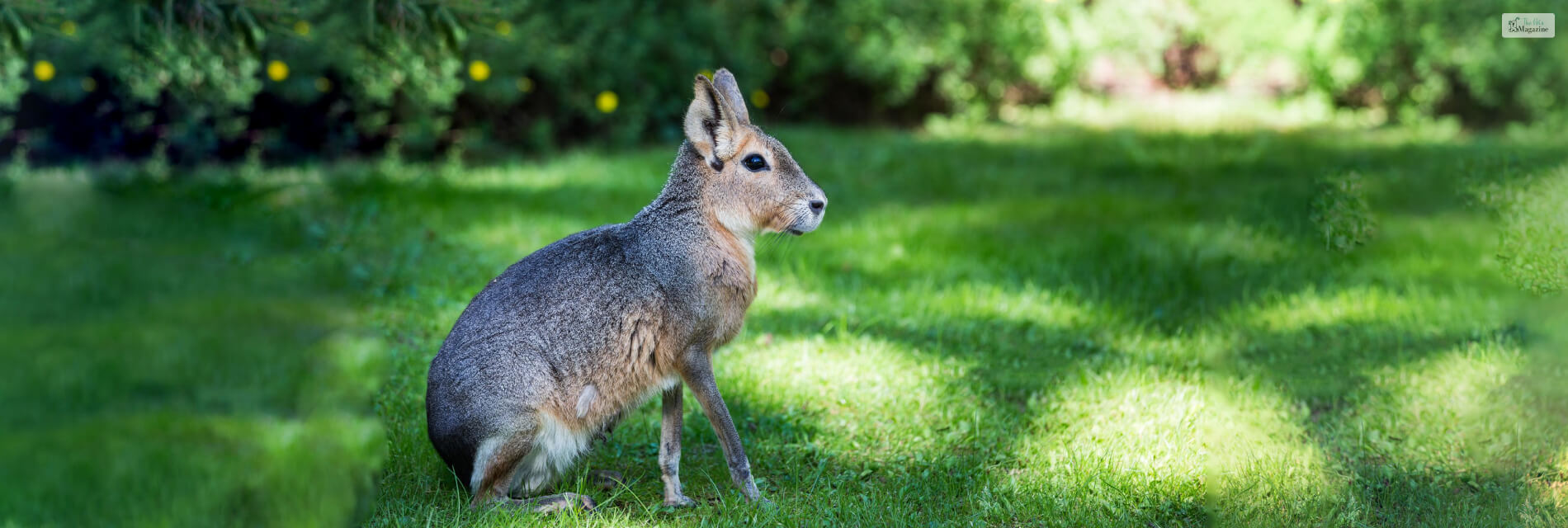
If you are a big fan of exotic animals, then you are going to love this exotic little member of the guinea pig family. Patagonian Mara is one of the most docile animals that can be kept quite easily in captivity in cages.
These Patagonian Mara, also known as Cavy, looks like large rodents, which is why they are also distant relatives of the Guinea pig family. Patagonian Mara is an herbivorous animal and has somewhat rabbit-like features.
Patagonian Maras are only found in Argentina; to be more specific, within 28 to 50 degrees South Latitude. They are herbivores, hence these large rodents prefer to stay among shrubs and grasslands. Also you can find in barren lands as well such as the Monte Desert.
Overview
Here’s a brief overview about the Patagonian Mara:

| Kingdom | Animalia |
| Names | Patagonia Cavy, Mara, and Dillaby |
| Phylum | Chordata |
| Class | Mammalia |
| Order | Rodentia |
| Family | Caviidae |
| Genus | Dolichotis |
| Species | D. patagonum |
| Binomial Name | Dolichotis Patagonum |
| Size & Weight | 18 inches & max 35 pounds |
| Lifespan | 14 years in captivity |
| Speed | 25 miles/hour |
Can Patagonian Mara Be a Good Pet?
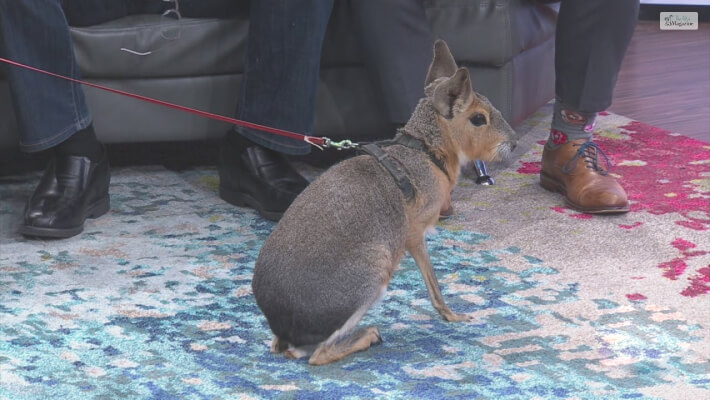
Since Patagonian Mara is an exotic animal, there are certain things you need to consider before deciding on keeping one as a pet. Only after analyzing all these points should you consider buying one as a pet.
Legality
Whenever the question arises about keeping an exotic animal as a pet, you need to check any legalities surrounding it. Patagonian Mara is a member of the rodent family. Hence they can easily be owned as pets.
Patagonian Maras are exotic animals, So make sure to check the legal aspect before buying one.
States like Georgia, California, New Hampshire, Hawaii, and Colorado, legally don’t allow such exotic pets as Patagonian Mara. But states like Alabama, Texas, Oregon, and Washington, allow you to keep a Mara as a pet without any legal permits.
But it is true that laws and regulations change very often and so if you want to buy a Patagonian Mara, check with your local governing body first.
Behaviour & Temperament
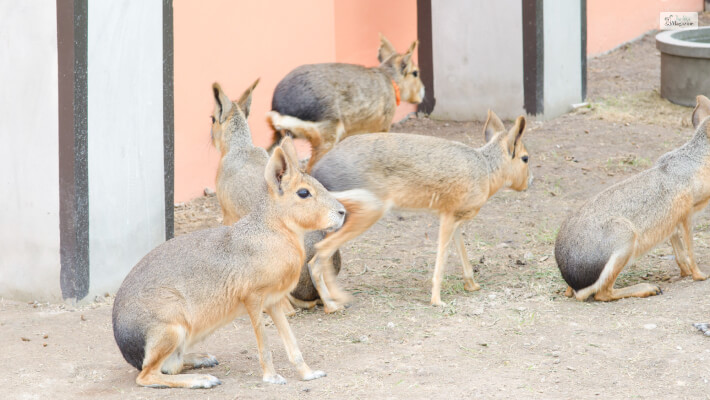
The best thing about Patagonian Mara is that they are very active during the day and are not nocturnal. Patagonian Maras in the wild are shy when approached. But when raised from a young age, Maras are affectionate and friendly.
Maras require a lot of human interaction and attention. They are also very demanding towards daily belly rubs and snuggly cuddles.
The male Patagonians have a scent of their own which they use to mark their territories, which also includes your home. So be prepared to smell urine and also anal gland secretion in certain places of your home.
Since Patagonian Mara requires constant attention and affection, they tend to live in pairs of both genders. But if you give a lot of attention to your Mara, then they won’t require another one.
Housing

Patagonian Maras tend to dig burrows to live inside them. In the wild, Maras are very social and live together in many burrows dug in the ground. Each burrow is inhabited by a pair of Maras. This Patagonian Mara habitat looks a lot like Prairie dog towns.
So if you do decide to get a Patagonian Mara as pet, then buy a large and secured enclosure to ensure that they have a comfortable living space.
If a huge cage in your living room seems impractical, then you can keep the cage outside. And to keep your Mara warm, fix the cage with heating lamps and warm blankets during winter.
The outdoor enclosure should be a minimum of 10 ft x 10 ft. measurement so that Patagonian Maras have a large enough space to run, jump and burrow. The wire used to fence in the outdoor enclosure should be atleast 7 fit high or more. This is because, Patagonian Maras have very strong hind legs and can jump upto 6 ft, high.
The Maras are expert diggers so in order to prevent them from escaping, the enclosure should be dug a couple feets down into the ground and concreted. If the idea of concrete floor does not appeal to you, then you can also consider using a chain link fence and burying it a few feets underground to prevent your Mara from escaping while trying to dig,
The enclosure should also have a small dog house like shelter which your Patagonian Mara can use to escape the elements. Make sure to include a place to sleep for the Patagonian Mara inside the shelter. If you live in a place where the temperature tends to get a little cooler after sunset, then you may want to place a heating pad inside the shelter too. But make sure to keep the electrical cord out of your Patagonian Mara’s way as they may chew the cord.
Food & Diet

As I mentioned, Patagonian Mara are herbivores, like other rodents such as Guinea Pigs. Similar to guinea pigs, Patagonian maras also need constant access to hay like alfalfa, meadow hay, timothy hay, or even bluegrass to help them file their molar teeth in the back.
In captivity, you need to provide your Mara with leafy vegetables and grass to complement the hay. Vegetables like kale, parsley, collards, and dandelion leaves. Patagonian Maras also like squash, sweet potatoes, and even apples. You should sprinkle powered vitamin C with their food as they require vitamin C supplements.
Health Problems
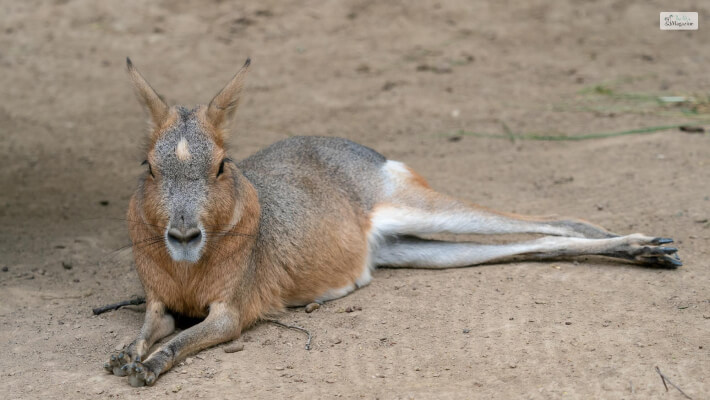
When they are in captivity Patagonian Maras, if they are allowed to roam freely on cabinets, couches, and furniture, are prone to fractured bones. They also get highly affected by certain dental problems such as mouth deformation and overbites.
Often they are affected by gastrointestinal and heart problems. So you need to ensure proper health check-ups of your mara animal annually.
Grooming

This is one of the easiest animals to groom. Patagonian Maras don’t require any baths or showers. You won’t even have to brush them. Because, like cats, they tend to clean themselves using nothing but their tongues.
Exercise & Training
Patagonian Maras are known to take off jumping and occasionally leaping and sprinting when they are in the wild, along with the daily grazing. So in captivity, they might feel restrained and need more space to move around.
So it is better if you train your Patagonian Mara to wear a leash and harness so they can go running and hiking with you. Though they are not easily trained, by using the clicker training used for dogs, they can be trained.
You can train your Mara to use a litter box, like cats. Use a metal box to prevent them from chewing it.
Reproduction

These Patagonian Maras are pretty monogamous until the death of one, then they pair with another. The male Patagonian Maras are solely responsible for maintaining the pair’s bond. They follow the female mara everywhere.
| Mating Behaviour | Monogamy |
| Reproduction Season | August – January |
| Pregnancy Duration | 90 days |
| Baby Carrying | 2 pups |
| Independent Age | 75 – 78 days |
| Baby Name | Pup |
Patagonian Mara Pet: Yay or Nay!
An important thing to remember about Patagonian Mara is that while many people tend to keep them as indoor pets, they will not behave like traditional indoor pets. In addition while they can be trained to a certain extent, they will never be as well-trained and well-behaved as a dog.
Maras (also known as Cavies) are rodents and like most rodents, they love to chew things. Without any proper supervision, they will chew furniture, pillows, and anything in a human home.
These animals also have a strong urge to dig and if kept inside may try to dig through your floor or your carpet. So if you plan on keeping them at home, make sure to keep an eye on them as much as possible as Patagonian Maras are quite capable of destroying your living room.
But if you think you are capable of providing a proper caring environment for a Patagonian, then, by all means, get one. But you should know that these Patagonian Maras require a lot of affection and attention. If you can provide that too, Maras can be friendly, cuddly, and trainable with a leash and harness. .
Purchasing A Patagonian Mara
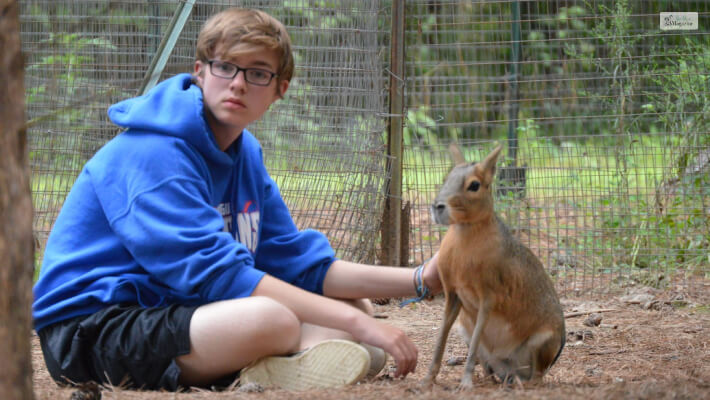
The average cost of a Patagonian Mara is about $200 to $300. And you need to make sure that you purchase one from a certified breeder and buy one as a baby and not as an adult. From a certified breeder, you are able to get legal and valid documentation.
Frequently Asked Questions (FAQs)!
Now that you know everything about Patagonian Maras, here are a few queries that others had about them.
Ans: Patagonian maras are known to live in a place called Pampas. Slowly but steadily, this area is declining, and with that, their habitat is also declining. Along with that, hunting is also an important reason why the number of Patagonian maras is reducing.
Ans: Both the Patagonian mara and the capybara belong to the same rodent family. Both of them are diurnal mammals, with their primary place of origin being Argentina.
Ans: If Patagonian maras are raised along with gentle dogs and cats, they can be very friendly. But Maras should not be left alone with dogs and cats.
Wrapping Up!
So now you know that Patagonian Maras are great as pets, but they do need special care and attention. So you are up to the mark for that kind of care and attention, then surely get one as a pet. But Patagonian mara facts are that, since they are exotic animals, they always thrive better in the wild.
As always, if you find this article helpful, surely let us know in the comment section down below.
Read Next..






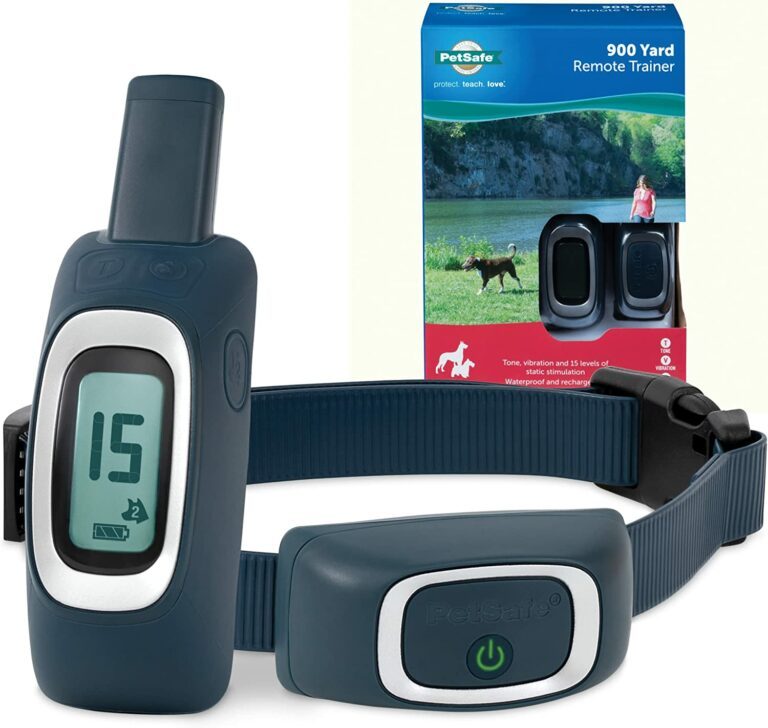


All Comments
26 March, 2024
Your insights are a valuable addition to the conversation on this topic. Excellent article!
Reply